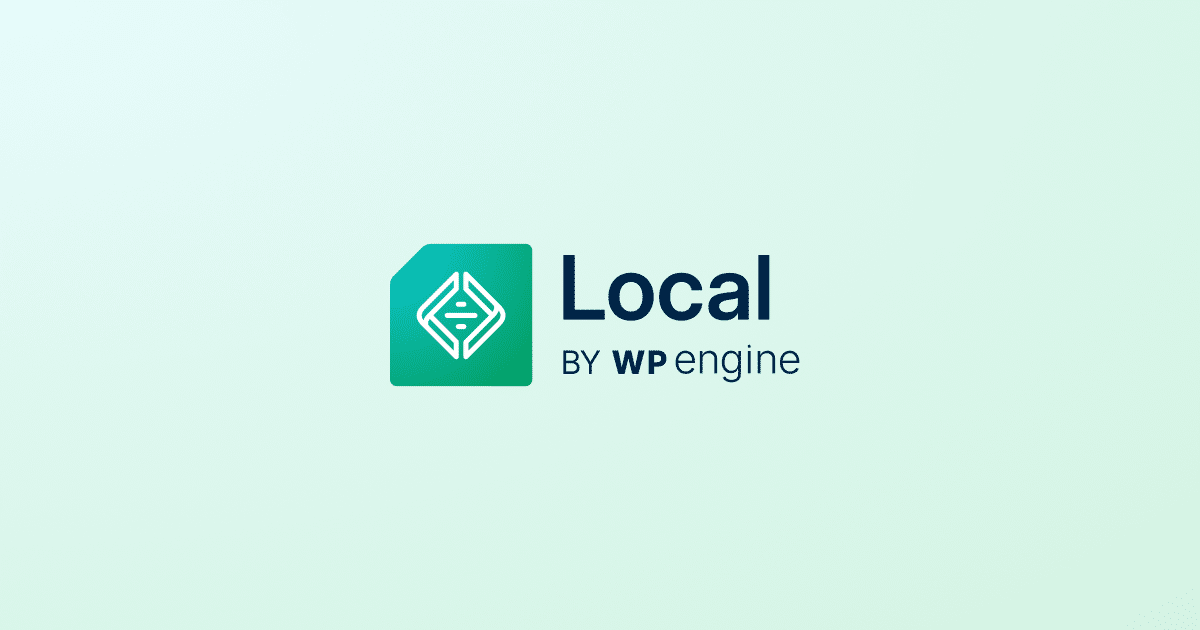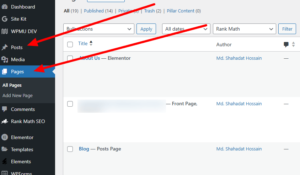Running WordPress locally can save time and offer greater control. It allows testing and development without affecting your live site.
Setting up WordPress on your local machine is a smart move for developers and bloggers. It provides a risk-free environment to experiment and learn. You can test new themes, plugins, and updates without the fear of crashing your live site.
Running WordPress locally also speeds up the development process since it eliminates the need for constant online updates. Plus, it’s a great way to practice coding or design skills. This guide will walk you through the best ways to run WordPress locally, ensuring you have a smooth and efficient setup to work with.
Introduction To Local WordPress
Running WordPress locally means creating a local server on your computer. This allows you to build and test WordPress sites without affecting the live website. It’s an essential step for developers and hobbyists alike.
Importance Of Local Development
Local development offers a safe environment to experiment. You can try new plugins, themes, and customizations without any risk. No downtime or broken functionalities on your live site.
Developers can debug more efficiently. They have full access to server logs and debugging tools. This makes it easier to spot and fix issues.
It also speeds up development. Local servers are faster because they don’t rely on internet speed. Changes appear instantly, making the workflow smoother.
Benefits Of Running WordPress Locally
- Cost-effective: No need to purchase hosting during the development phase.
- Offline Access: You can work on your site without an internet connection.
- Learning Environment: Ideal for beginners to learn WordPress without fear of breaking anything.
- Version Control: Easily manage different versions of your site.
Local development lets you create a testing environment that mimics your live site. It ensures that any changes work seamlessly before going live.
Comparison Table
| Feature | Local WordPress | Live WordPress |
|---|---|---|
| Cost | Free | Varies by hosting provider |
| Speed | Fast (no internet dependency) | Depends on server speed |
| Risk | Low (isolated environment) | High (affects live users) |
| Accessibility | Offline | Online required |
Running WordPress locally has clear advantages. It’s a must for anyone serious about web development.
Choosing A Local Server Environment
Running WordPress locally is great for development and testing. A local server environment helps you work on your site without affecting the live version. Choosing the right environment is important. Below are some options to consider.
Xampp
XAMPP is a popular choice for setting up a local server. It’s free and easy to use. XAMPP includes Apache, MySQL, PHP, and Perl. It works on Windows, Mac, and Linux.
- Download and install XAMPP from the official website.
- Open the XAMPP Control Panel.
- Start Apache and MySQL.
- Create a new database for your WordPress site.
- Download WordPress and extract it to the XAMPP htdocs folder.
- Run the WordPress installer by visiting
http://localhost/yourfoldername.
Using XAMPP is straightforward. It provides all the tools you need in one package.
Mamp
MAMP is another local server environment. It stands for Mac, Apache, MySQL, and PHP. MAMP is available for both Mac and Windows.
- Download and install MAMP from the official website.
- Open MAMP and start the servers.
- Create a database using phpMyAdmin.
- Place the WordPress files in the MAMP htdocs folder.
- Visit
http://localhost:8888/yourfoldernameto run the WordPress installer.
MAMP is user-friendly. It is often preferred by Mac users. It simplifies the setup process.
Local By Flywheel
Local by Flywheel is a modern tool for WordPress development. It is designed to make local development easy. It is available for both Mac and Windows.
| Features | Details |
|---|---|
| One-click WordPress installation | Quickly set up new sites |
| Blueprints | Save site templates for reuse |
| SSL support | Test HTTPS on local sites |
- Download and install Local by Flywheel.
- Open the application and create a new site.
- Fill in the site details and choose your preferred environment.
- Local by Flywheel handles the setup for you.
Local by Flywheel is ideal for developers. Its features make WordPress development faster and easier.
Installing Xampp
Installing XAMPP is an essential step to run WordPress locally on your computer. XAMPP provides a complete package with Apache, MySQL, PHP, and Perl. This makes it an excellent choice for setting up a local server environment. Let’s dive into the process of installing XAMPP.
Download And Setup
First, go to the XAMPP official website. Download the version that matches your operating system. XAMPP is available for Windows, Linux, and macOS.
Once the download is complete, open the installer file. Follow the on-screen instructions to install XAMPP. The default installation settings are usually fine. After the installation, open the XAMPP Control Panel. This tool helps you manage the various components of XAMPP.
Configuration Steps
Start the Apache and MySQL modules from the XAMPP Control Panel. You will see their status turning green. This indicates that they are running successfully.
Next, open your web browser and type http://localhost in the address bar. You should see the XAMPP dashboard, which confirms that your server is up and running.
To configure your database, click on phpMyAdmin from the XAMPP dashboard. This opens the phpMyAdmin interface. Here, create a new database for your WordPress installation. Choose a name that is easy to remember.
Now, download the latest version of WordPress. Extract the downloaded file and move the WordPress folder to the htdocs directory inside the XAMPP installation folder.
Rename the wp-config-sample.php file to wp-config.php. Open this file in a text editor. Update the database name, username, and password fields to match your phpMyAdmin settings. Save the changes.
Finally, open your browser and type http://localhost/wordpress. Follow the WordPress installation steps. Provide your site information and admin credentials.
Congratulations! You now have WordPress running locally using XAMPP.
Setting Up Mamp
Running WordPress locally can save you time and prevent potential issues. MAMP is one of the best tools to achieve this. It is a free, easy-to-use application that sets up a local server environment on your Mac or Windows computer. Let’s dive into the steps to get MAMP up and running for your WordPress site.
Installation Process
First, download the MAMP installer from the official website. Choose the version compatible with your operating system. Once downloaded, follow these steps:
- Open the downloaded file to start the installation.
- Drag the MAMP folder to your Applications directory (for Mac) or run the installer (for Windows).
- Launch MAMP from your Applications folder or Start Menu.
The MAMP interface will appear. You’ll see options for Apache, Nginx, and MySQL servers. By default, Apache and MySQL are selected. These are necessary for running WordPress locally.
Configuring Mamp For WordPress
After installation, you need to configure MAMP to work with WordPress. Follow these simple steps:
- Open MAMP and click on Preferences.
- Select the Ports tab. Ensure Apache is set to port 80 and MySQL to port 3306. This makes your local server accessible via
http://localhost. - Go to the Web Server tab. Choose the folder where you want to store your WordPress files. This is your Document Root.
- Save your preferences and start the servers by clicking Start Servers.
Next, create a database for WordPress:
- Open
http://localhost/phpMyAdminin your browser. - Click on Databases at the top.
- Enter a name for your database and click Create.
Now, download the latest version of WordPress from the official website. Extract the files into your Document Root folder. Open http://localhost in your browser to start the WordPress installation process. Follow the on-screen instructions to complete the setup.
And that’s it! You’ve set up MAMP for WordPress. You can now develop and test your WordPress site locally.
Using Local By Flywheel
Using Local by Flywheel is a great way to run WordPress locally. It is user-friendly and provides many features for developers. Whether you are new to WordPress or an experienced developer, Local by Flywheel can help you create, test, and manage WordPress sites on your computer.
Getting Started With Local By Flywheel
Begin by downloading and installing Local by Flywheel from their official website. It is available for Windows, Mac, and Linux. Follow the installation steps, which are straightforward.
Once installed, launch the application and click on the “Create a new site” button. You will be prompted to enter the site’s name, and you can choose the local environment settings. Select the PHP version, web server type, and MySQL version that match your needs.
Local by Flywheel will then set up your site. This process may take a few minutes. After setup, you can access the site from the Local dashboard. Click on “Admin” to open the WordPress admin panel or “View Site” to see the front-end.
Advanced Features
Local by Flywheel offers advanced features that enhance your development workflow. One of these features is Live Links. Live Links allow you to share your local site with others via a temporary URL. This is useful for client reviews or team collaboration.
Another powerful feature is the Local Connect. With Local Connect, you can push and pull sites to and from Flywheel and WP Engine hosting platforms. This makes it easy to sync your local development site with your live site.
Here is a table of some key features:
| Feature | Description |
|---|---|
| Live Links | Share your site with a temporary URL |
| Local Connect | Sync sites with Flywheel and WP Engine |
| SSL Support | Enable SSL for local sites |
| Blueprints | Create site templates for quick setup |
Local by Flywheel also supports one-click SSL. This means you can enable SSL for your local sites with a single click, ensuring your local development environment mirrors your live site.
Another feature is the ability to create Blueprints. Blueprints allow you to save site configurations and reuse them for new projects. This saves time and ensures consistency across your projects.
Installing WordPress Locally
Running WordPress locally is an excellent way to test and develop your website before making it live. It allows you to experiment with themes, plugins, and customizations without any risks. Follow these steps to install WordPress locally on your computer.
Downloading WordPress
First, you need to download WordPress from its official website. Visit wordpress.org/download and click the download button. This will save a zip file to your computer. Unzip the file to a folder where you want to store your local website files.
Creating A Database
Next, you need to create a database for WordPress. Open your local server environment (such as XAMPP or MAMP). Then, open phpMyAdmin from the control panel.
In phpMyAdmin, click on the ‘Databases’ tab. Enter a name for your database in the ‘Create database’ field. Ensure the collation is set to ‘utf8_general_ci’. Click ‘Create’ to finish.
Configuring Wp-config.php
Now, open the unzipped WordPress folder and locate the wp-config-sample.php file. Rename it to wp-config.php. Open this file in a text editor.
You’ll need to enter your database details in the following lines:
define('DB_NAME', 'your_database_name');
define('DB_USER', 'your_database_user');
define('DB_PASSWORD', 'your_database_password');
define('DB_HOST', 'localhost');
Replace ‘your_database_name’, ‘your_database_user’, and ‘your_database_password’ with your actual database information.
Save the file and close the text editor.
That’s it! You have successfully installed WordPress locally. Now, you can begin building and customizing your site.
Managing Local WordPress Sites
Managing local WordPress sites can be both rewarding and challenging. Setting up a local environment helps developers test changes without affecting live websites. Below, we discuss how to access your local WordPress site and offer some troubleshooting tips.
Accessing The Local Site
Once you have set up your local WordPress environment, accessing it is straightforward. Here’s how you can do it:
- Open your local server application (such as XAMPP, MAMP, or Local by Flywheel).
- Ensure that the local server is running.
- Navigate to your browser and type in
http://localhost/your-site-folder. - Press Enter, and you should see your local WordPress site.
Make sure the local server is active before trying to access the site. If you encounter issues, double-check your server settings.
Common Troubleshooting Tips
Encountering issues with your local WordPress site is common. Here are some troubleshooting tips:
- Blank Page: Check your
wp-config.phpfile for errors. Ensure the database connection details are correct. - Database Connection Error: Verify your database credentials in
wp-config.php. Ensure the database server is running. - 404 Errors: Go to Settings > Permalinks and click Save Changes to refresh permalinks.
- Slow Loading: Disable unnecessary plugins and themes. Optimize your local server settings.
If issues persist, reviewing your server logs might provide additional insights. Regular backups can also help you restore your site if needed.
Migrating To A Live Server
Running WordPress locally is great for development and testing. At some point, you will need to move your site to a live server. This process involves several steps to ensure your site runs smoothly online. Let’s go through the key steps.
Exporting The Local Site
First, you need to export your local WordPress site. This involves creating a backup of your site’s files and database.
- Navigate to your local WordPress directory.
- Compress the entire folder into a .zip file.
- Use a plugin like All-in-One WP Migration to export your database.
- Save the export file to your computer.
Ensure that you have all the necessary files and database exports before proceeding.
Importing To A Live Server
Now, it’s time to import your local site to your live server.
- Log in to your hosting account’s control panel.
- Access the File Manager or use an FTP client.
- Upload the compressed .zip file to your public_html directory.
- Extract the files in the public_html directory.
- Create a new database in your hosting control panel.
- Import the database export file using phpMyAdmin.
- Update the
wp-config.phpfile with your new database details.
Be sure to follow each step carefully to avoid errors.
Final Checks And Testing
After importing your site, perform final checks and testing to ensure everything works correctly.
- Check your site’s URL and update it in the WordPress settings.
- Verify that all links, images, and media are displaying correctly.
- Test your site’s functionality, including forms and plugins.
- Clear your browser cache to see the latest changes.
If you encounter any issues, refer to the backup files and troubleshoot accordingly.
Ensuring your site works properly on a live server is crucial. This guarantees a smooth transition from local development to a live environment.
Frequently Asked Questions
How To Set Up WordPress Locally?
To set up WordPress locally, use tools like XAMPP, MAMP, or Local by Flywheel. Download and install WordPress, then create a database. Configure the wp-config. php file and run the WordPress installer.
Why Run WordPress Locally?
Running WordPress locally allows for safe development and testing. It avoids affecting the live site. It’s faster, and changes are immediately visible. This setup is ideal for experimenting with themes, plugins, and customizations.
What Are The Best Tools For Local WordPress Development?
The best tools for local WordPress development include XAMPP, MAMP, and Local by Flywheel. These tools provide a local server environment. They are easy to set up and use.
Can I Migrate My Local WordPress Site To Live?
Yes, you can migrate a local WordPress site to live. Use plugins like Duplicator or All-in-One WP Migration. Export the local site and import it to the live server. Ensure all links and settings are updated.
Conclusion
Running WordPress locally offers numerous benefits. It’s fast and secure. You can test changes without affecting your live site. A local setup helps you learn and experiment freely. Tools like XAMPP or Local by Flywheel make the process simple. Start today and enhance your development skills.
Your local WordPress site awaits. Happy blogging!






